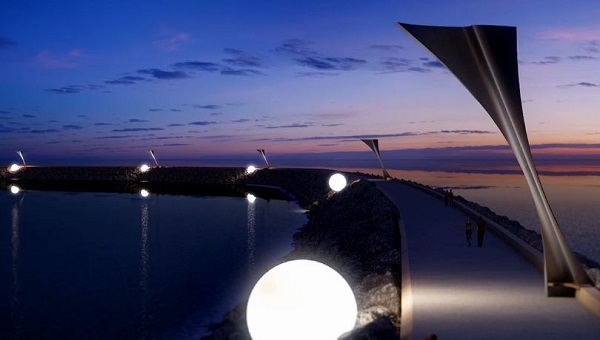The Royal Society of London’s Philosophical Transactions of the Royal Society, a journal that has been published for more than 350 years, recently devoted an entire issue to tidal energy. This is what a giant topic this renewable energy source, rarely heard much about in the United States, is becoming in the United Kingdom.
There’s a big reason: the U.K., particularly on its western flank, is home to an extraordinary tidal range that gives it perhaps half of Europe’s entire tidal energy resource.

Thus, we’ve seen the recent revival of the massive – and environmentally uncertain – Severn Barrage proposal. The Severn Estuary drains Great Britain’s longest river, the Severn, widening into the Bristol Channel as it divides Wales and England. Its attraction as a source of power is obvious: Massive amounts of water flow in and out of the estuary continually (a National Oceanic and Atmospheric Administration list of the 50 locations in the world with the largest tidal ranges includes several spots along the estuary).
While a debate over the Severn Barrage is stewing, another less-celebrated proposal previously considered has also been revived in new, spectacular fashion. It’s out 30 or 40 miles west toward the mouth of the channel from the Cardiff area where the barrage is envisioned, in Swansea Bay.
There, a developer has proposed to build a tidal lagoon with an energy-producing capacity of at least 250 megawatts, capable of generating 400 gigawatt-hours of electricity a year – more than enough power for all of Swansea’s 200,000-plus residents.
The concept on its face is simple: A curving seawall– like any breakwater you’ve seen, but forming a loop – would cordon off about 10 square kilometers of the bay, where the tidal range is a dramatic 10 meters. One section of the seawall would have an opening in it, for the turbine house. The developers explain the process that then takes place:
As the sea outside the breakwater rises and is held back a difference in water levels is created, known as “head,” and once a sufficient head height is reached sluice gates are opened and water flows into the lagoon through turbines to generate electricity. This process then occurs in reverse, on the ebb tide, as sea levels start to fall and a tidal head is created by holding water back within the lagoon. This way the tides can flow through our turbines four times daily to generate power.
Now, the developers claim a couple of things about the technology they propose using: First, that it’s proven, being similar to what has been used at the La Rance barrage in Brittany, France, for decades; and second, that it’s different. As in, better:
The primary difference between previous applications and the tidal lagoon is the efficiency of electricity generation in both directions, on ebb and flood tides. We are working with the world’s leading turbine manufacturers to optimise turbine technology and energy outputs. Accurate tidal data for Swansea Bay has been used in energy output studies undertaken from 2011 onwards, to assess the potential for energy extraction through a tidal lagoon. Results have been extremely encouraging and the predictable power output can be used directly by the National Grid as a baseload source of electricity capacity; this means that the tidal power station does not require back-up, fossil-fuel driven load balancing elsewhere.
As mentioned, a similar proposal was put forward in 2006, and it died on the vine. The difference? This team say their proposal “incorporates feedback to the earlier project, responds to design reviews, incorporates additional consultation responses and provides updated and more extensive baseline information on which to base an on-going, comprehensive consultation process.”
There’s that. And, also, they have a really slick video that shows the full vision of this renewable energy project, which comes off not as merely a power plant, but as a sort of area renewal project, an outdoor entertainment district, a place for people to gather. Check it out:
Would there be environmental implications for such a project? Enormous ones, no doubt. But perhaps on balance it could be a winner. Swansea is excited about the possibility, according to a recent report from This Is South Wales:
Robert Francis Davies, chairman of Swansea’s development management and control committee, said it was the most exciting project he had seen before the council in his career. He said: “This could be a first in the world for Swansea. We had the first railway and we could have the first tidal lagoon as well. I think people will be blown away by it.”
Some people already are!